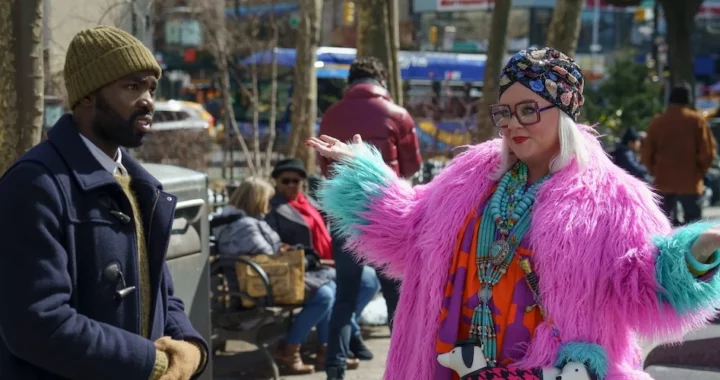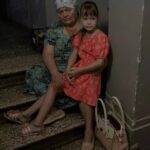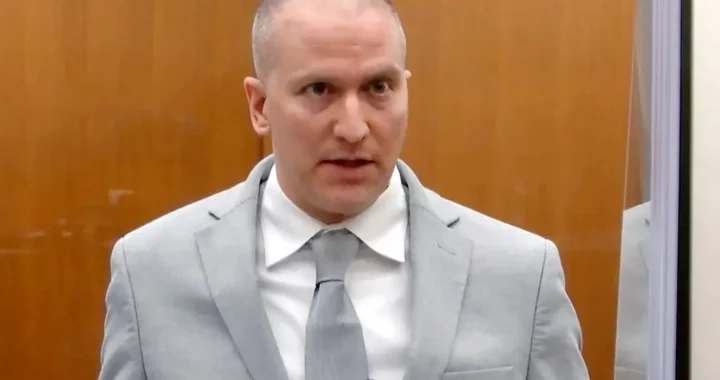‘Four Daughters’ Movie Review 2023
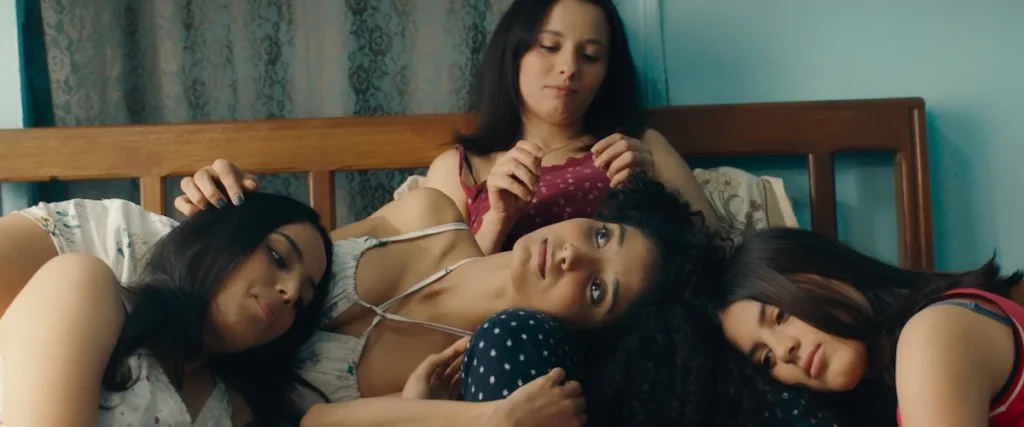
“Four Daughters”: A Multilayered Exploration of Women’s Resilience and Identity
The connection among women, particularly within a family, serves as a testament to their shared experiences. What truly shapes the bond of sisterhood is the shared understanding of navigating the world as women while growing up in an environment where patriarchal and misogynistic influences are consistently encountered. Although the title of Kaouther Ben Hania’s documentary, “Four Daughters,” initially suggests a focus on motherhood, it equally delves into the fractures that can develop within sisterhood. The core message of the documentary revolves around the idea that in a household comprised predominantly of women living under similar circumstances, the journey into adulthood can be profoundly transformative, and family ties may not always align with religious or political beliefs.
Olfa Hamrouni is the mother of four daughters: Eya, Tayssir, Ghofrane, and Rahma. However, her two eldest daughters, Ghofrane and Rahma, left their home years ago, becoming radicalized and joining ISIS. As Olfa and her two youngest daughters reflect on the memories of life both before and after the departure of Ghofrane and Rahma, they also explore the complex intersection of their femininity and cultural identity. Through their discussions, they dissect the worlds and histories that have shaped them, shedding light on the subconscious desire for empowerment that all women share.
Olfa, Eya, and Tayssir are present to share their perspective. However, Ghofrane and Rahma are absent, so two actresses, Ichraq Matar and Nour Karoui, step in to fill their roles within the film. They seamlessly integrate into reenactments of the sisters’ shared moments, effectively embodying the spaces left vacant by Ghofrane and Rahma, thereby encapsulating the essence of their memories.
Although their presence as actors remains evident, their inclusion becomes powerful through a shared connection forged by the exchange of traumatic experiences. When they enter the room for their introductions, the sisters immediately recognize who will be portraying each of their missing siblings, and this revelation moves Olfa to tears. Recollections of shared moments, such as lying in bed together, playing with each other’s hair, and engaging in sisterly conversations about first periods, puberty anecdotes, and tales of romantic interests, exude a profound authenticity. This portrayal captures the essence of a sisterly bond, played by women who inherently understand the intricacies of such a connection, thus enhancing the emotional depth of the film.
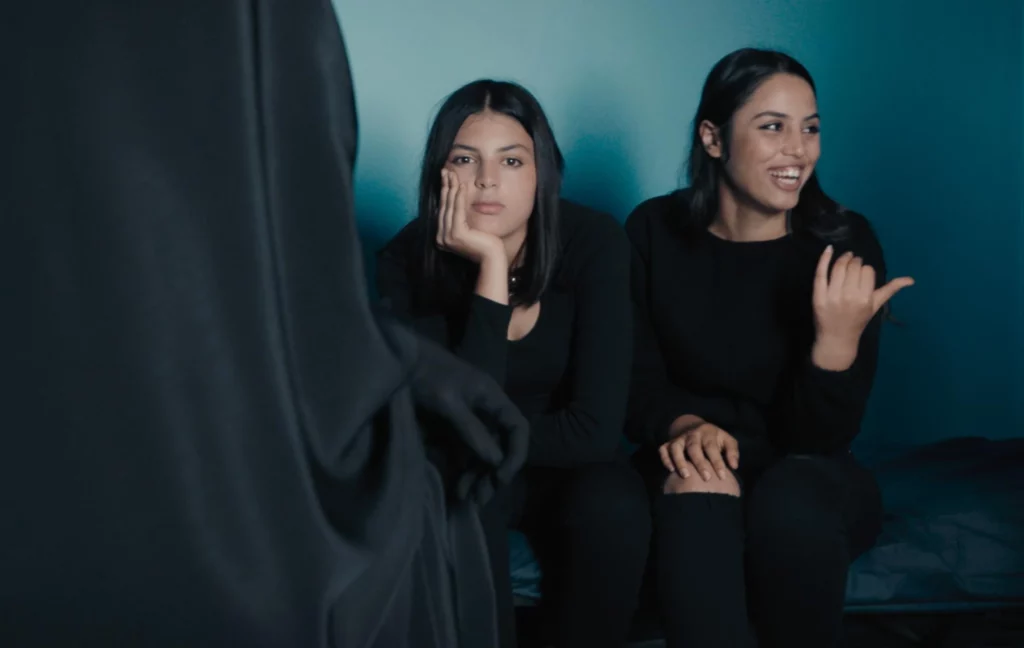
However, this dynamic also raises a poignant question: What emotional toll do these actors bear in participating in the retelling of these deeply personal and painful stories?
Actress Hend Sabry takes on the role of Olfa’s surrogate, immersing herself in memories that prove too painful for Olfa to personally revisit. However, many times during Sabry’s portrayals, Olfa is a visible presence in the background, an ever-present influence within her own fictionalized narrative, occasionally stepping in to correct the narrative’s depiction. “Four Daughters” places a strong emphasis on empowering women to take charge of their own storytelling, while also permitting its actors to actively engage in the narrative.
Sabry not only embodies the past but also questions and challenges Olfa, challenging her authoritative stance and even confronting her for enforcing certain misogynistic and patriarchal social norms in the upbringing of her daughters. This dynamic underscores the film’s commitment to both ownership of the narrative and collaborative storytelling.
The ethical boundaries of these moments are challenging to gauge. How much personal critique is acceptable as these women courageously share their most profound traumas? At what point do questions cross into the realm of judgments? Conversely, how much emotional burden should be placed on the actors? In one particularly uncomfortable instance, actor Majd Mastoura, who portrays the male figures in the women’s lives, becomes so overwhelmed that he halts a scene and refuses to resume it. Eya, visibly distressed, asserts that it is his responsibility as an actor to continue with the lines, reminding him that this is not his personal trauma and urging him to return and complete the scene.
While the meta-reenactments serve as the cornerstone of “Four Daughters,” they inherently represent a one-sided perspective, with the trust between performers limited by the subjects’ desires to have their stories recounted or reconstructed on their own terms. This situation raises questions about reliability and morality, as it blurs the lines between the accuracy of the narrative and the respect shared between the actors and the subjects. To provide essential support for the overall narrative, the film also incorporates more traditional elements of documentary filmmaking, such as the talking heads style and later-found archival footage.
Kaouther Ben Hania’s ability to seamlessly blend emotional depth with analytical insight is a remarkable achievement in “Four Daughters.” The film excels in delivering a multi-layered narrative, even when the fairness of its structural approach is called into question.
Throughout the majority of the film, Olfa, Eya, and Tayssir express a wide range of emotions, from nostalgia and affection to despair, indignation, and anger. While the actors are well-trained not to internalize the trauma of their roles, they still convey their characters’ emotions through tears, embraces, and meaningful glances that reveal their shared discomfort. It becomes evident that, particularly for the sisters, the process of making this film serves as a form of therapy.
Through these reenactments, they finally say the words they had wished to utter, relive long-lost moments they yearned to experience again, and find a voice that their younger selves had yet to fully develop. “Four Daughters” narrates a tale of estrangement, self-reflection, and emotional release.
The film refrains from villainizing any of the characters, opting instead for a compassionate narrative approach that portrays each woman as a complex individual, influenced to varying degrees by external authorities that have shaped their beliefs and actions. The generational implications are profoundly moving, spanning from Olfa’s often stifling adherence to traditional values, to Rahma and Ghofrane’s radicalism, and Tayssir and Eya’s embrace of more modern feminist ideals.
As Olfa and the sisters provide insights into their shared trauma and heartbreak, and engage in discussions with one another and the actresses, the result is not merely a family’s story, but a powerful exploration of women’s roles in the world and the personal costs associated with the coping mechanisms they choose.
Now playing in theaters.
Film Credits
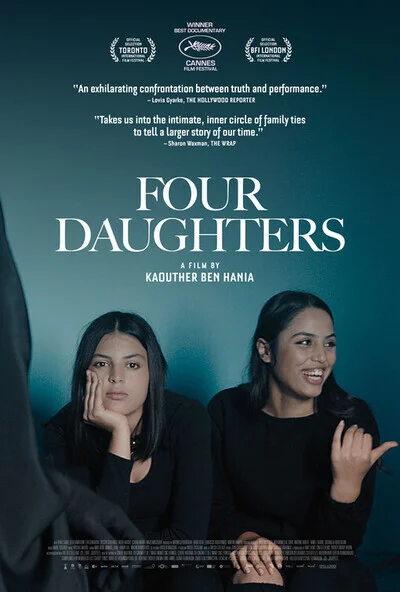
Cast
Hend Sabry as Olfa
Nour Karoui as Rahma Chikhaoui
Ichraq Matar as Ghofrane Chikaoui
Majd Mastoura as The Man
Olfa Hamrouni as Self
Eya Chikahoui as Self
Tayssir Chikhaoui as Self
Director
Kaouther Ben Hania
Writer
Kaouther Ben Hania
Cinematographer
Farouk Laâridh
Editor
Jean-Christophe Hym
Kaouther Ben Hania
Qutaiba Barhamji
Composer
Amin Bouhafa
By: M Z Hossain, Editor Sky Buzz Feed

